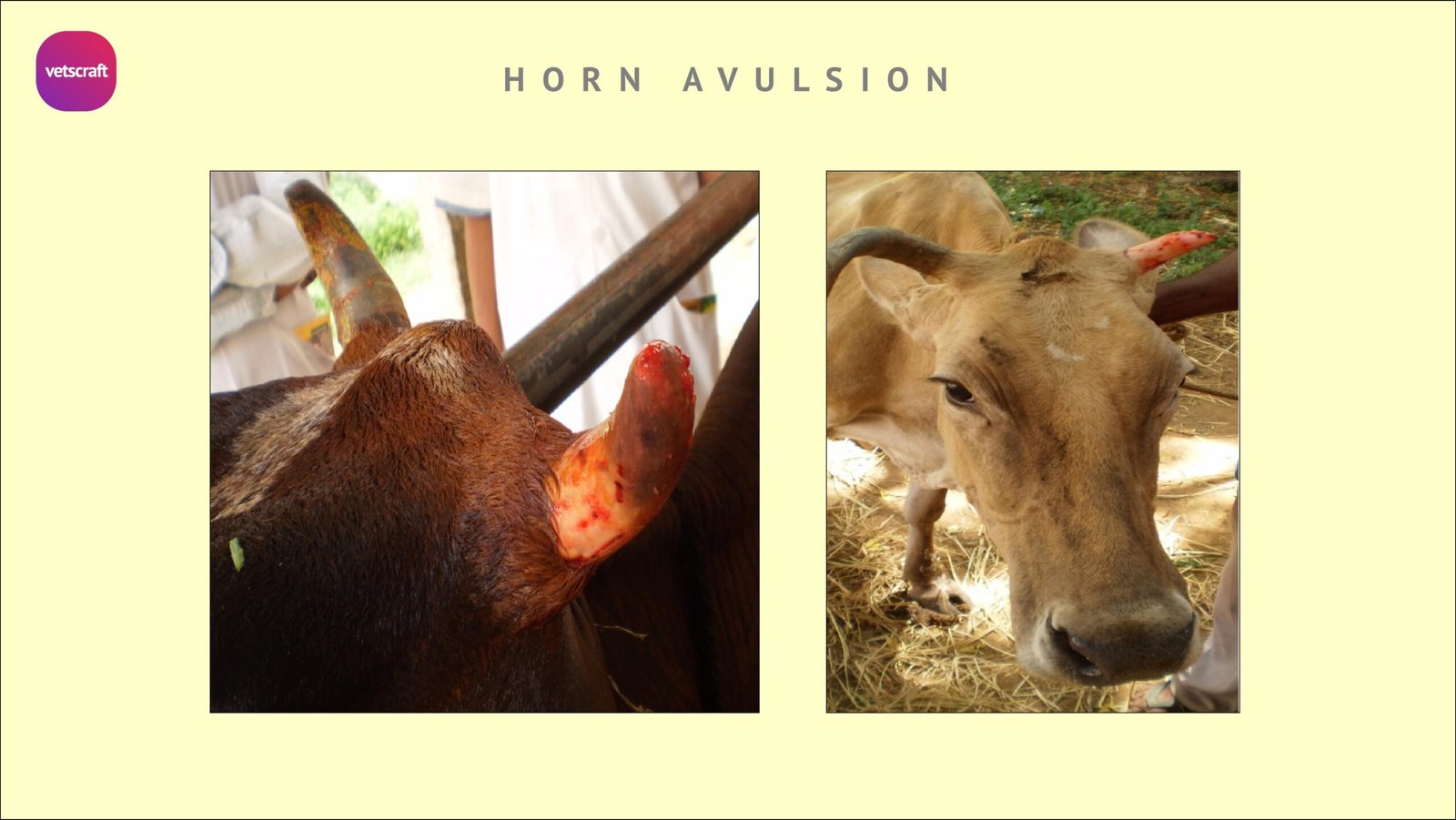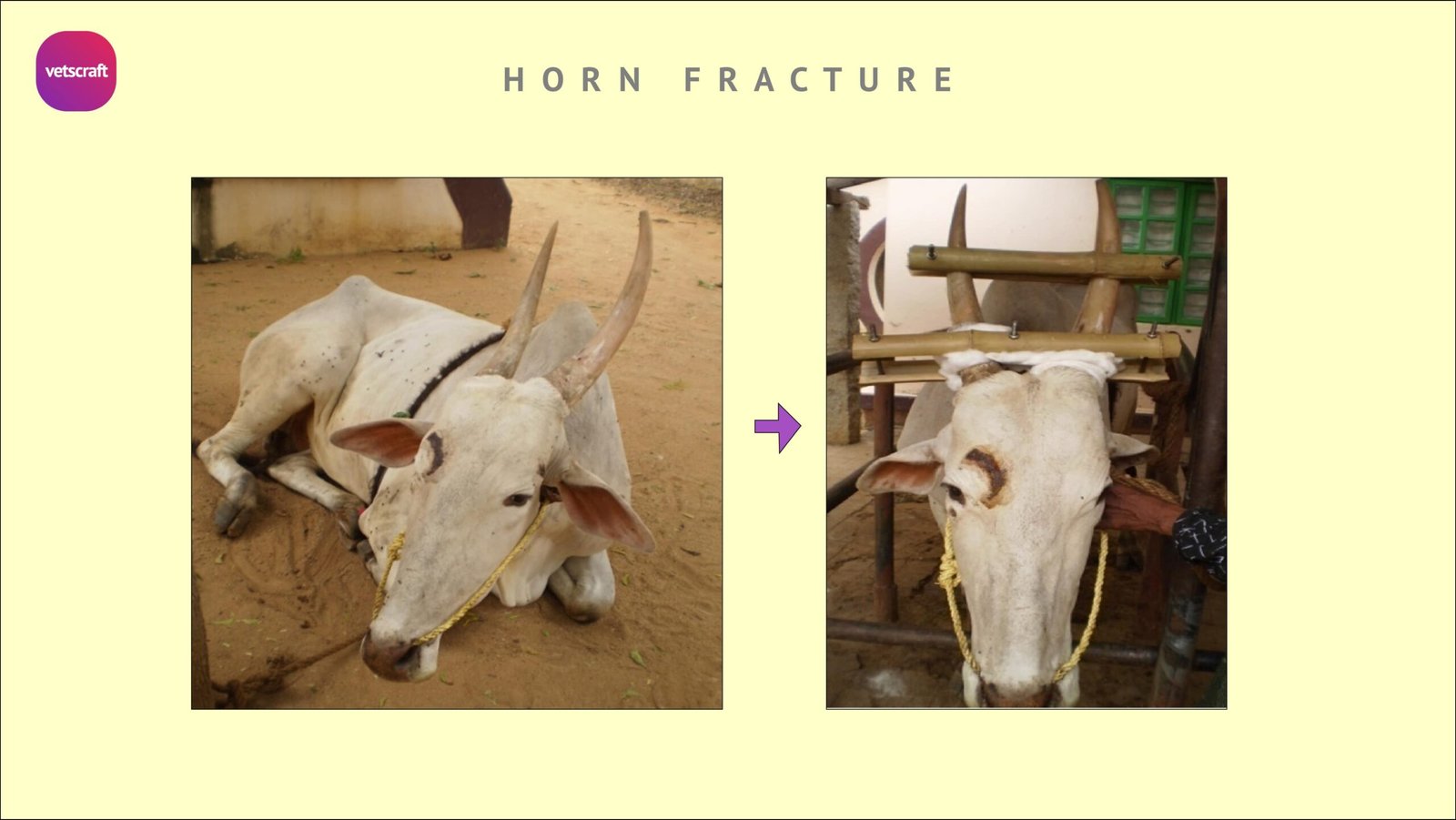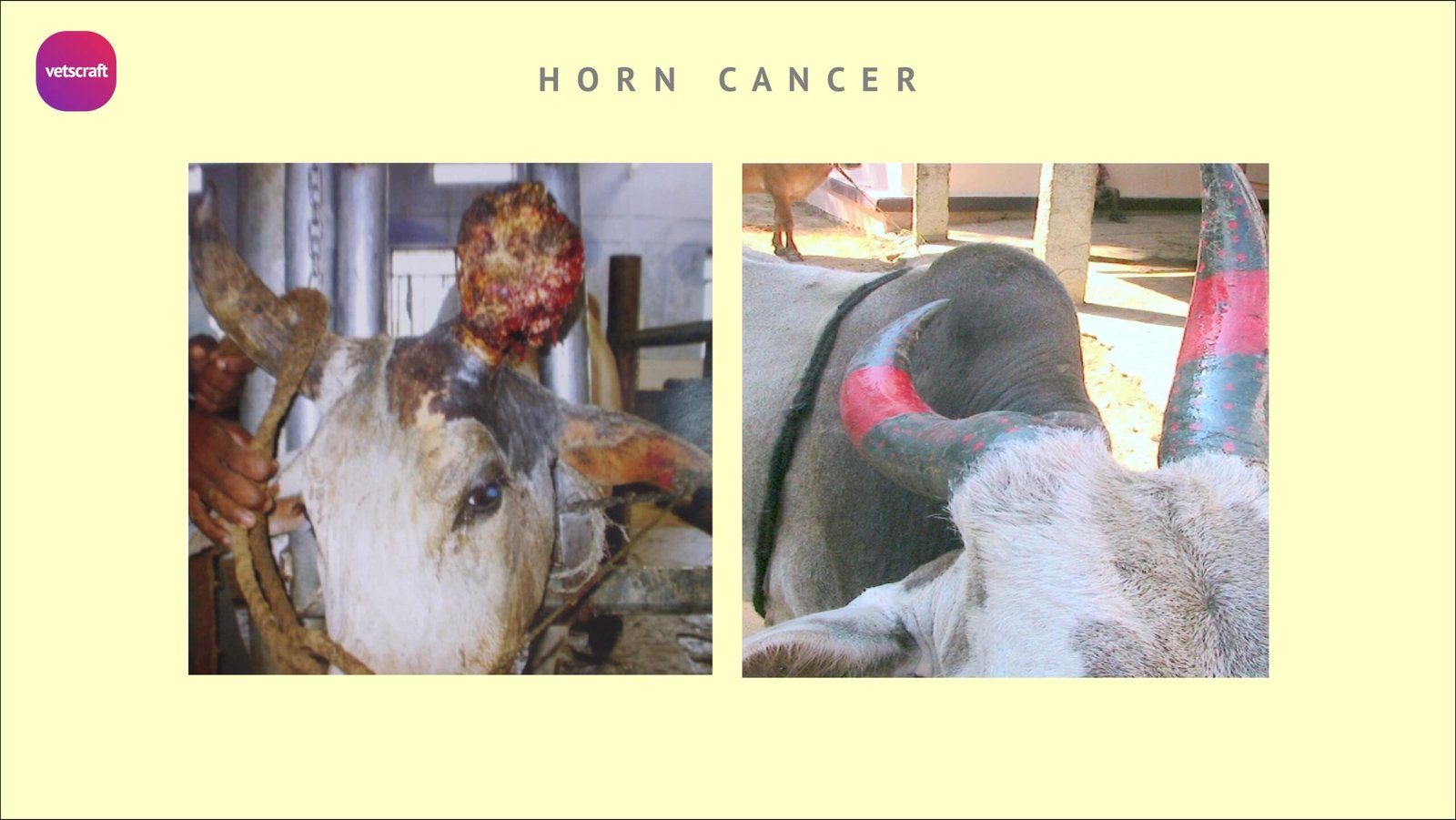TABLE OF CONTENTS
Surgical affections of Horns
Surgical affections of Horns in animals are avulsion and fracture of horn, abnormal growth, fissure in horn core, horn cancer etc.
The cornual process (Horn Core) of the Frontal bone encloses the horn and corium of horn completely envelops the horn core and fuses with its periosteum.

The frontal sinus is continuous with horn. It is also known as flint bone.
Interior of horn consists of irregular spaces, which are continuation of the frontal sinus.
The cornual branch of the superficial temporal artery and its satellite vein supplies the blood to horn.
The cornual branch of the lachrymal nerve supplies horn. Lachrymal nerve is the branch of ophthalmic nerve, which in turn is the branch of trigeminal (fifth cranial nerve) nerve.
Horns of Buffaloes
Horns are massive, angular and well developed with wider base in Buffaloes compared to cattle. The thickness of horn increases towards apex until it becomes solid. The corium is traversed by numerous blood vessels.
Surgical affections of Horns in animals are-
Avulsion of horn

Etiology of avulsion of horn
Etiology of avulsion of horns in animals are direct violence or fight with other animal, repeated injury by yoke, chronic inflammation of keratogenous membrane etc.
Symptoms of avulsion of horn
- Horn shell will be loosely attached and falls off
- The horn core and corium will be exposed
- Haemorrhage from the site and from the nostril of the affected side
- Since the bony core is sensitive the condition is often painful
Treatment of avulsion of horn
Regional nerve block (Cornual nerve block) used to desensitise the horn area and ease the management procedures.
Cleaning with normal saline and antiseptics, tincture benzoin to control the bleeding and fly repellents for avoid maggot infestation.
Bandage applied in traction with other horn to stabilise.
Fracture of horn

Etiology of horn fracture
External violence or fight with other animal cause oblique or transverse fracture of horn in animals.
Classificationof horn fracture
- Complete fracture: fracture of the horn through its full thickness
- Incomplete fractures: Only a part of horn is fractured
- Fracture near the tip of horn
- Fracture at the middle of horn
- Fracture at the base of horn
Clinical signs of horn fracture
Presence of an open wound and bleeding from the part and from affected side nostril are the clinical signs of horn fracture.
Treatment of horn fracture
Treatment option depends on the type of horn fracture. For incomplete fractures or fracture at the tip of horn immobilisation using plaster of paris is recommended.
For fractures at middle third or lower third of horn stabilisation is not possible. So amputation is done below the level of fracture. Control haemorrhage with Tincture Benzoin and bandage.
For fracture at lower third of horn amputation by flap method is advocated.
Surgical procedure for horn fracture
The Horn amputation is carried out through the frontal bone below the base of the horn after flapping the skin forwards and backwards in two halves by a long elliptical incision extending from the nuchal crest to the frontal ridge.
The horn is amputated with an axe blade and bleeding is controlled.
The skin flaps are sutured in apposition with interrupted sutures.
Empyema (pus) in frontal sinus my be seen as complications of horn avulsion and fracture when proper care not taken.
Horn cancer

Horn cancer is usually seen in cattles by a cauliflower like growth at the base of the horn. Its treatment is only surgical amputation of affected horn.